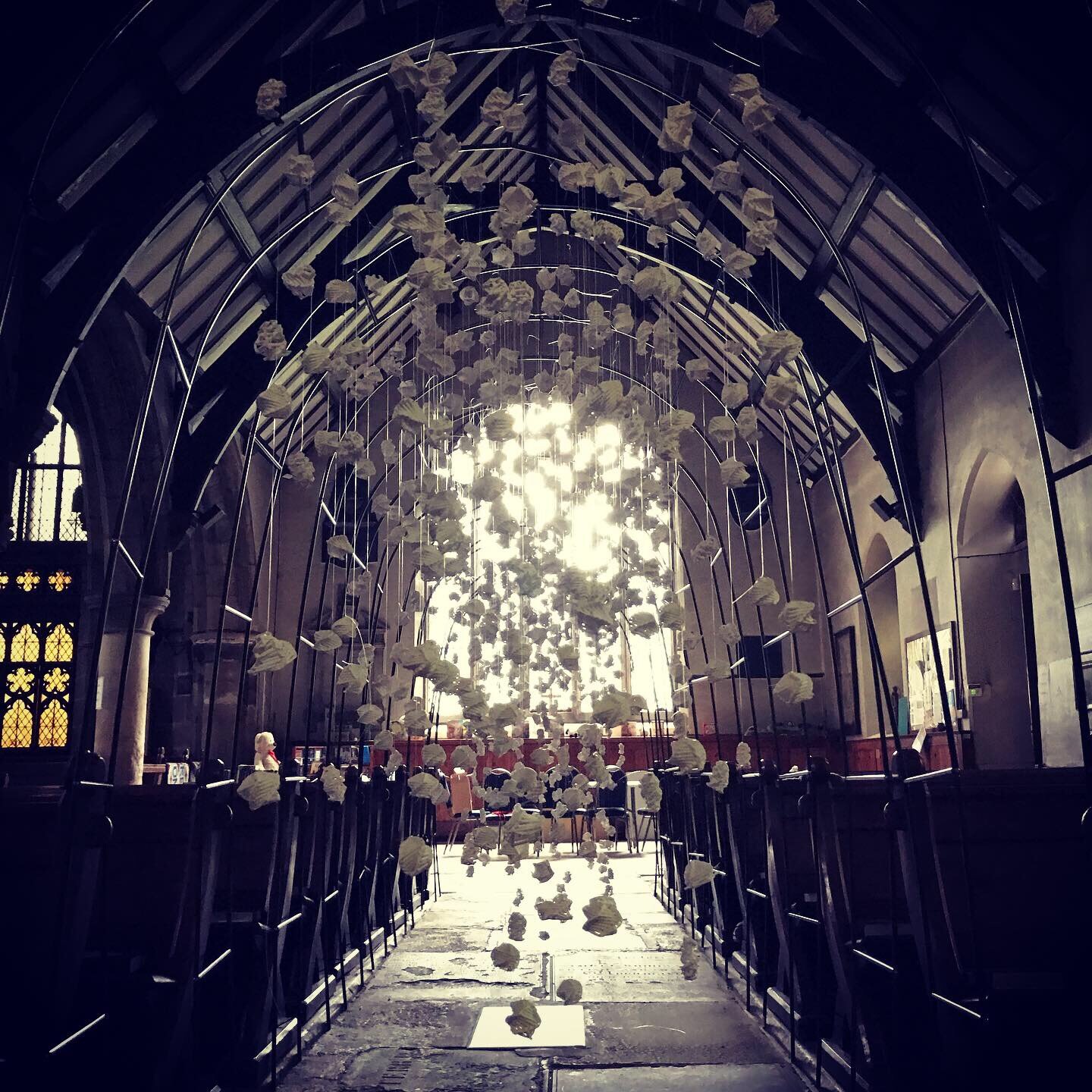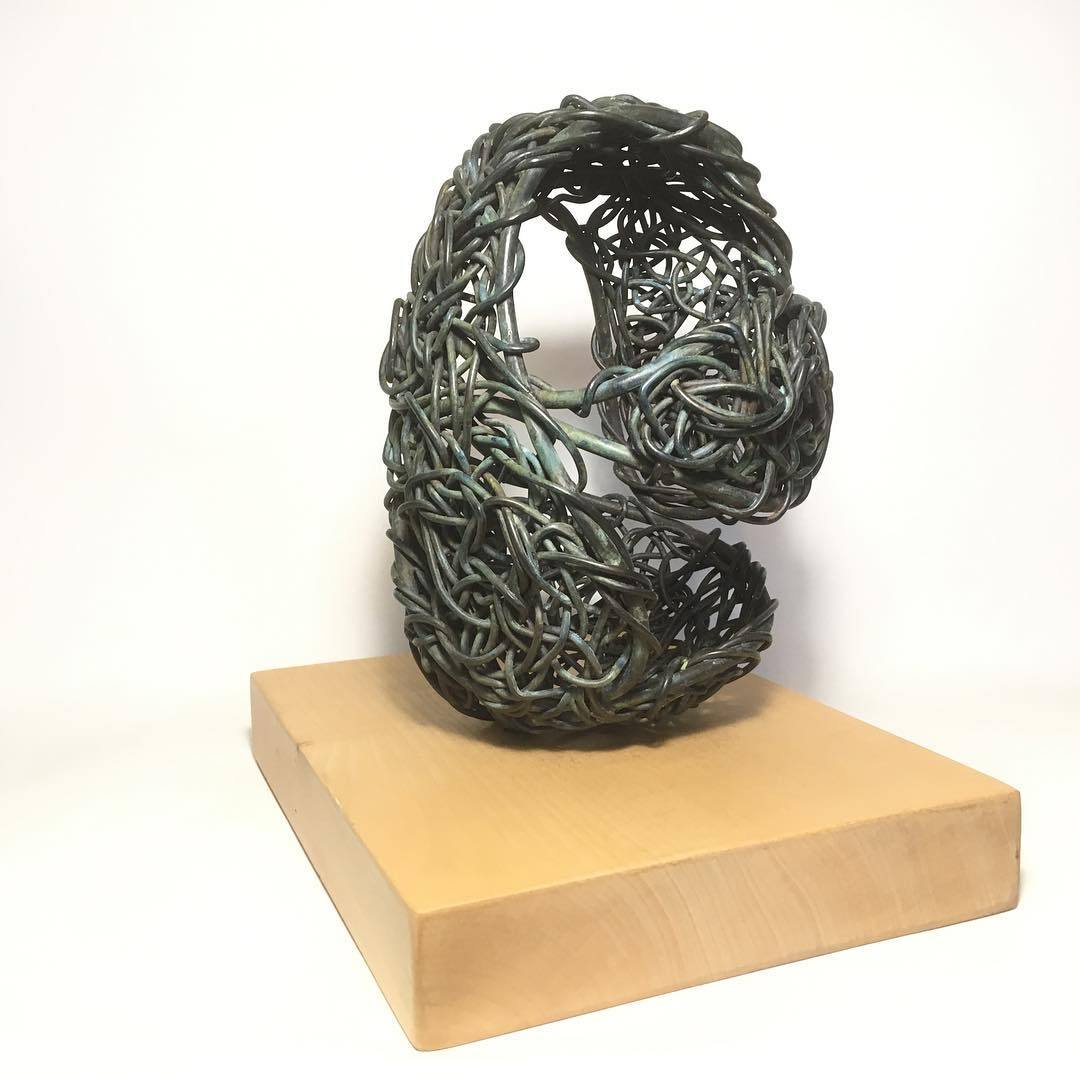During this second artist residency I have been opening the doors to the Gothic Hall every day to allow the visitors to Elvaston Castle a glimpse inside the artist studio. I have been fascinated with the responses of the visitors whether it be a comment to each other or to their children, or a comment made directly to me.
Children seem naturally to be very inquisitive with every aspect of the artwork on show, I’ve overheard their “what is it?” questions to parents and carers and the response is fascinating. Answers have ranged from; “I don’t know, it’s art” to “these are artworks and they represent what the artist is feeling or experiencing” or they add “lets go find out”. The children and adults alike have seemed to be interested in what I have been creating or enjoy watching me as I carve into a block of plaster, they want to know why I am creating that shape, or what tools I am using or what is it going to be.
As a little experiment I have numbered all my plaster carvings from 1-13 and placed a note book and pen among them with a question “Which carving do you like and why”. Here are some of the responses, (you can look up the relevant carvings on earlier posts):
No 7. Looks like four crescent moons fused together
No 7 looks like a star
No 6 reminds me of an affectionate hug
No 7 reminds me of a crabs claws
No 5 Reflection of a natural form such as a fossil but equally of a millstone. The roundness of the sculpture is soft on the eye.
No 8 a big hug
No10 large nut
No 2 Earth like
No 6 Looks different from every view
No 6 I like it because its very smooth and pretty, also I like the shape of it
No 8 It reminds me of a child reaching up to hug an adult
No 6 Two swans whispering secrets
No 7 It looks like a dragon claw - raaaah!
No 1 Reminds me of a Yoga pose
No 6 Looks like Rams horns
No 2 I like the triangular outer form and the inner comma shape
No 5 Mill stone
No 13 Looks like Ghosts (Elliot aged 4)
No 7 It’s my favourite shape, its the best, it looks like bananas (Also Elliot aged 4 who spent a long time deliberating on his favourite)
No 7 It reminds me of claws
Such a wide variety of comments and I was surprised which shapes were being favourited, completely the opposite to my own preference. Some people said they were seeing female genitals which is interesting as many people saw male genitals in my older work. I don’t set out to make the female or male parts but the natural world is full of shapes that could be viewed as genitals.
Many visitors are drawn to touch the art, parents say to their children “don’t touch it’s art” or don’t bother saying anything and let their children do what they like, but most inform them to “ask the lady” and they are really happy when I point out a touching table. This table has resulted in some fascinating discussions with adults and children alike as they experience through their fingers.
It’s not just the children who want to touch, the plaster carvings seem to draw adults and every day they ask if they can touch, I always say yes. Whenever I visit a museum or gallery I often feel very frustrated at not being able to touch and experience the artwork through my fingers, so when there is the opportunity to touch I always do. It is such a pleasing sight to see some one enjoying touching your art work and getting joy from it.
Is the texture or surface of the sculpture as important as the look?
What are your own experiences ?










